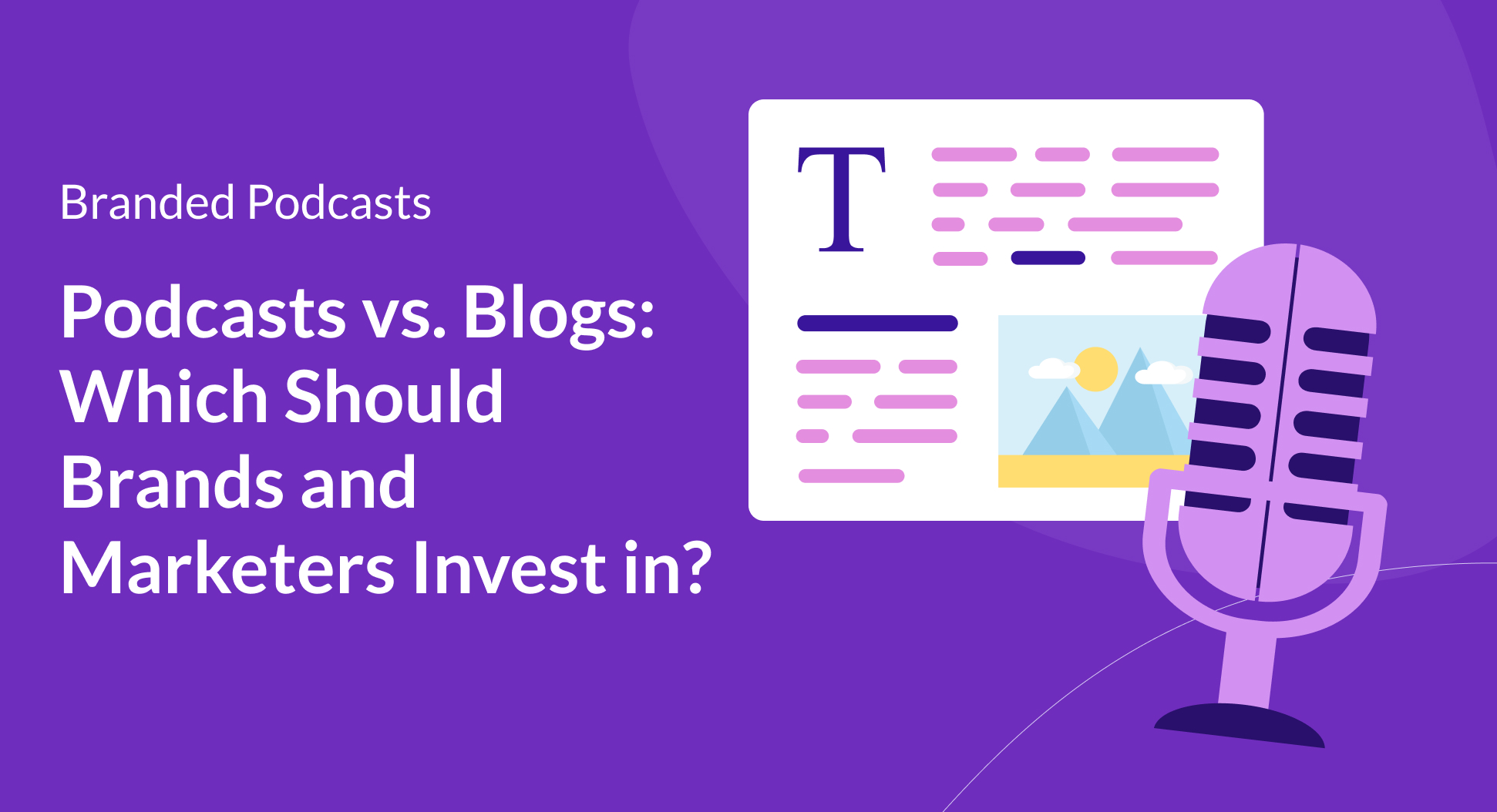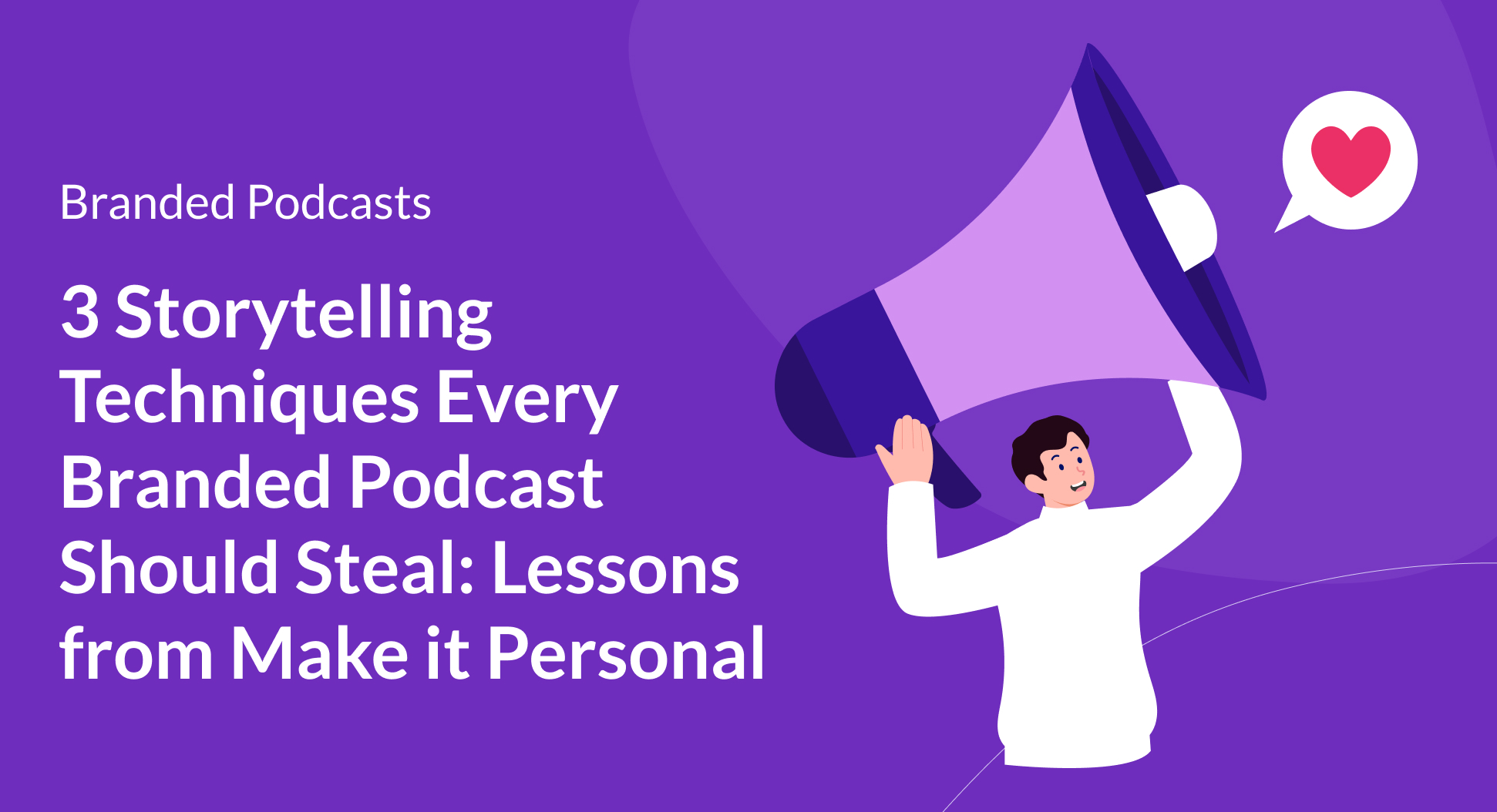Contents
What do Nokia's ringtone, Intel's four-note bongs, and McDonalds' "I'm lovin' it" all have in common?
They’re all masterpieces of audio branding – what the BBC calls “the 21st-century offspring of the jingle” with immense earworm potential. That’s a catchy song or tune that gets stuck in your head, but we’ll come back to that.
With 90% of people getting earworms each week, you’re probably wondering exactly how brands and advertisers can capture our dwindling 8.25-second attention span with three musical notes and enough repetition.
From the days of the charismatic traveling salesman to the present era of digital advertising, one thing has remained constant: the power of audio.
In this blog post, we explore the fascinating realm of audio branding, the psychology behind why some songs stick, the enduring impact of catchy jingles, and the best practices to consider when creating your podcast’s audio brand.
The rise of radio and a jingle is born
Our journey into the psychology of audio branding begins in the early 20th century, during the arrival of commercial radio in the 1920s and 30s.
Before this time, consumers made their purchases in brick-and-mortar stores, and advertising primarily relied on printed descriptions of products.
However, as radio became a dominant medium, advertisers faced a challenge: how to market products to an audience that couldn't see them.
Enter the jingle – a catchy slogan set to a melody that subtly promotes a product or company without overtly selling it. This ingenious tactic quickly gained traction, reaching its zenith in the 1950s, and has continued to leave a lasting mark on our culture right up to the present day – think “Five Dollar Footlong” and “Like a Good Neighbor.”
Name that tune: Why some songs stick
To understand the enduring appeal of jingles, we must turn to the realm of music psychology. So prepare yourself, we’re about to cover some technical stuff.
Over the years, psychologists, neurologists, and musicologists have explored the profound effects of music on the human brain and its intricate relationship with memory. At the center of this exploration lies the enigmatic concept of the "earworm." We know, it sounds a little gross but stick with us.
Coined by University of Cincinnati marketing professor James Kellaris, the earworm is a musical snippet that lodges itself in your mind, persisting long after the music has stopped playing. It's a phenomenon commonly referred to as "Stuck Song Syndrome."
While the precise cause of earworms remains somewhat mysterious, much of music psychology points to the "phonological loop."
Discovered by scientists Graham Hitch and Alan Baddeley in 1974, the phonological loop comprises two components: the "phonological store" (our "inner ear," responsible for retaining speech sounds in order) and the "articulatory rehearsal system" (our "inner voice," which repeats these sounds to prevent forgetting).
This loop plays a crucial role in vocabulary development in early childhood and may explain why certain songs or fragments frequently resurface in our thoughts.
Earworms typically share three characteristics:
- They are short (about 15-30 seconds);
- They are simple (with easy-to-remember lyrics);
- And they’re repetitive (featuring a lively tempo and straightforward melody).
Consider, for example, the Safelite jingle, which has been etched in our memories since 2007 with its two simple lines: "Safelite repair. Safelite replace." We know you just sang that in your mind.
This jingle's brevity, simplicity, and repetition make it an ideal candidate for earworm status. It latches onto our minds, persisting even for those who consume media primarily through ad-free streaming services.
But the impact of music extends beyond mere memorability. Studies confirm that music has a profound emotional influence on the brain, forging deep connections with individuals.
A quick, melodious tune like Safelite's jingle, reminding you that they're always there to handle your auto glass needs, evokes feelings of security and protection. And those feelings are worth remembering.
In fact, it's why Belron, Safelite's parent company, has translated their jingle into over 20 different languages. The power of music transcends linguistic barriers, speaking directly to our emotions and memory.
What is audio branding? How does it play into podcasting?
Now that we understand why some songs stick, we can expand from the jingle to the larger realm of audio branding.
Audio branding is akin to an audio signature for your content. In the context of podcasting, it can manifest in various ways.
For instance, it could involve using the same intro and outro music for every episode, incorporating specific and memorable sound effects to transition between segments or highlight recurring themes, or infusing a touch of humor into your show through distinctive audio elements.
Podcasters are influencers in their own right. They shape conversations, build communities, and harness ad revenue or Patreon support to make their endeavors sustainable.
Just as a YouTuber's videos have a recognizable visual style, a podcast should have a distinct audio "feel" or identity. This unique soundscape is what helps you establish a strong online presence that sets you apart from others in your niche.
For example, Serial. Even though many of us have not listened to the show again since its release, the familiar high-pitched taps of the piano keys overlaid with the muffled telephone audio “This is a Global Tel Link prepaid call from Adnan Syed” teleports us right back to the podcast that some argue “started it all.”
Earworms and brand affinity
Considering how incredibly attuned to music our brains are, of course, your podcast music selection is going to be crucial.
Studies have shown that jingles — plop, fizz, fizz— do make a huge impact on our retention for brands. According to a study by Leicester University, consumers are 96% more likely to remember the brands that use music aligned with their brand identity.
Think McDonald's infamous "bah-dah-bah-bah-bahhh." In a mere couple of seconds, this simple tune evokes images of golden arches, cheeseburgers, and a clown that some of us might rather forget.
This is the essence of audio branding: the ability for someone to hear just a few seconds of audio and instantly recognize its source. This recognition triggers various emotional responses, forging a sense of connection between those emotions and the trigger itself.
However, this can equally go the other way.
You faintly hear clapping and the opening lines “So no one told you life was gonna be this way.” The minute your mind starts to conjure up the image of “The Friends Fountain” you’re met with the harsh realization – is this just another car ad?
When an iconic song—one that's significant and instantly recognizable—gets used in an entirely different context, it isn't merely a bit distracting; it can be downright unsettling.
The more frequently your "iconic" and easily identifiable song is used in diverse contexts, the more its potency diminishes.
Unfortunately, this is a common occurrence in the podcasting industry: the catchy tunes that underpin your spoken-word podcast also pop up in commercials, on other podcasts, on TikTok, and the list goes on.
How podcasters are choosing “their song”
Podcast production companies tend to draw from the same limited pool of music libraries available online.
The idea is simple - you pay a monthly subscription fee to access a library of songs that you can legally download and use. This eliminates a lot of licensing issues and allows creators to select a song in a few clicks without having to hire someone externally, but you can probably already spot the problem.
That “fun intro” or “catchy segue” is actually someone’s YouTube intro and someone else’s skincare ad.
Because our brains are so attuned to the power of audio, the gradual depreciation of a song's value as it gets used across a myriad of contexts means big problems for brand affinity.
“Music is a powerful tool and it can help shape a podcasts identity. Crafting the perfect intro with that perfect music bed can transcend the song for people. When your audience hears your podcast's intro jingle or music bed, it's almost a blanket of comfort- memories of all the other times they've listened to your podcast in the past.
There's so many podcasts that when I hear their intro, I am immediately transported back to another time when I was listening to that show in the past.”
– Dillon Moore, Producer & Sound Engineer @ Quill Inc & CoHost
Make your songs, yours
For smaller, less critical elements like scene transitions or background music to enhance your audio landscape, the selection available in your subscription libraries typically suffices.
However, when it comes to something as crucial as the opening theme song for your branded podcast, you’ll want something that’s uniquely yours.
Here are a couple of ways to achieve this:
- Secure exclusive rights: If you stumble upon a song you adore in one of those libraries, don't hesitate to reach out directly to the artist. Inquire if you can purchase exclusive rights to that song.
- Commission the same artist: If you already admire the style of a particular artist's music — why not commission them to create an entirely unique song for your show? This way, you're guaranteed that the song has never been used before and won't be used outside of your intended purposes. The brand recognition will far outweigh the upfront cost of a unique song.
Should my podcast bother with audio branding?
By incorporating audio branding into your podcast, you elevate your show to a new level, both in terms of production quality and reputation among your audience. These two elements are crucial for podcasting success. Your audio branding becomes a beacon of trust, drawing listeners back episode after episode.
Remember, it's not enough to have great content; people want to build a relationship with your brand, trust it, and know what to expect.
So, start thinking about the sonic signature you want to create for your show and watch as your podcast evolves into something truly extraordinary. After all, in the world of podcasting, it's more than words; it's the psychology behind audio that truly matters.




.jpg)




.png)

.png)




.png)
.png)
.png)
.png)